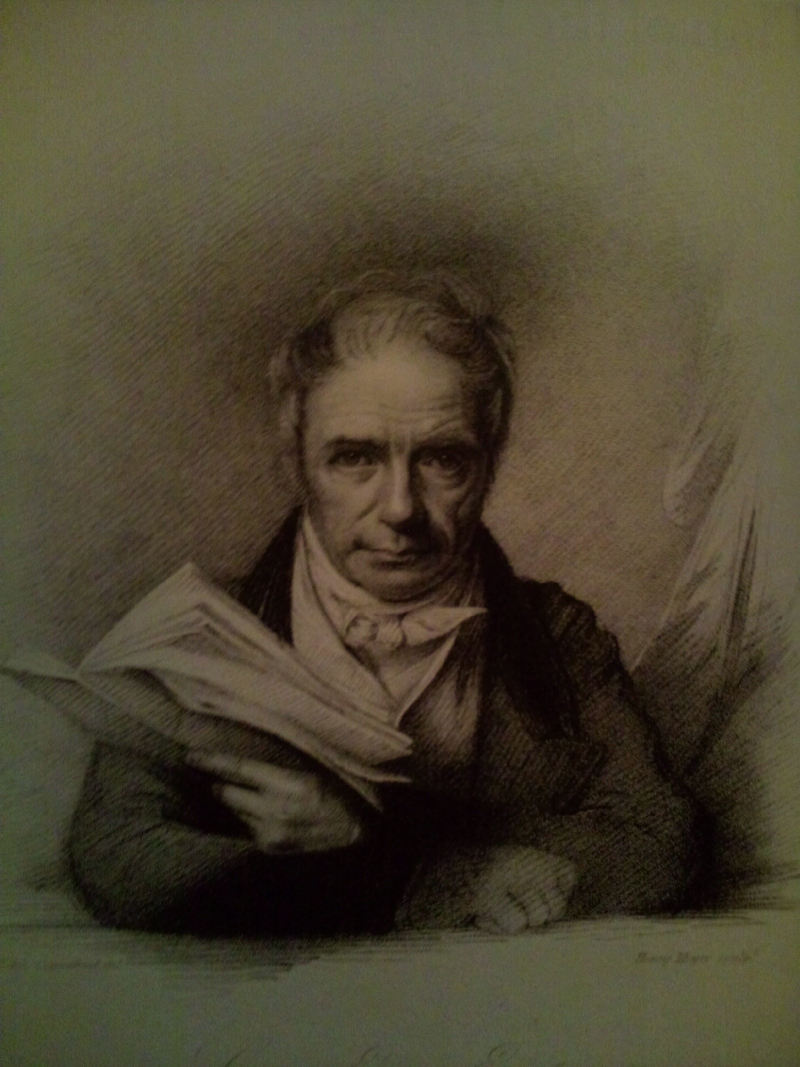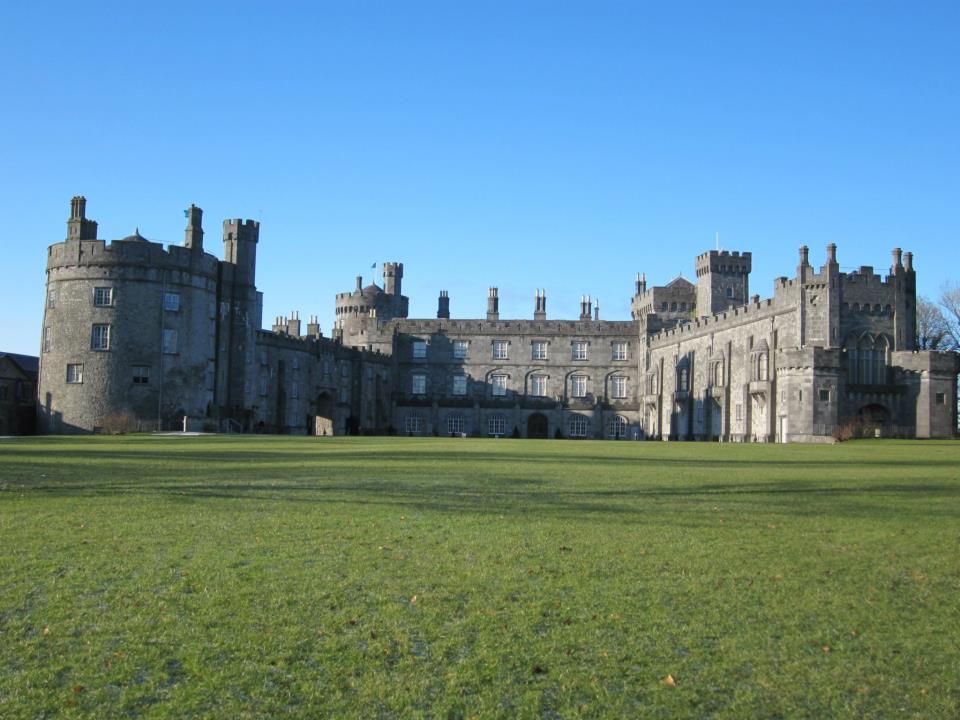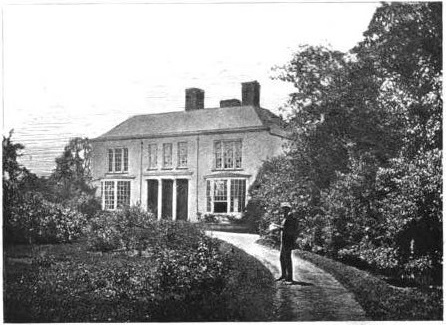|
John Comerford
John Comerford (1770–25 January 1832) was a miniature painter. Early life John Comerford was born in Kilkenny around 1770, though some sources put his date of birth as early as around 1762. His father was a local flax-dresser, and Comerford grew up opposite the Tholsel. Having gained some knowledge of art from copying the pictures in the collection of the Marquis of Ormonde at Kilkenny Castle, he went early in life to Dublin, and entered as a student in the art schools of the Dublin Society. In 1790, Comerford was recommended for a certificate from the school commending his "extraordinary merit in drawing from the flat". He was awarded a medal for his figure-drawing in 1791. Career He spent the early part of his career in Kilkenny and neighbouring counties, but he also worked in Dublin. His first commissions were of family members, including Jane, Anne, and Michael Langton of High Street, Kilkenny in 1794, and Lady Dunsany. Others were from the Dublin Society, painting por ... [...More Info...] [...Related Items...] OR: [Wikipedia] [Google] [Baidu] |
Kilkenny
Kilkenny (). is a city in County Kilkenny, Ireland. It is located in the South-East Region and in the province of Leinster. It is built on both banks of the River Nore. The 2016 census gave the total population of Kilkenny as 26,512. Kilkenny is a tourist destination, and its environs include historic buildings such as Kilkenny Castle, St Canice's Cathedral and round tower, Rothe House, Shee Alms House, Black Abbey, St. Mary's Cathedral, Kilkenny Town Hall, St. Francis Abbey, Grace's Castle, and St. John's Priory. Kilkenny is also known for its craft and design workshops, the Watergate Theatre, public gardens and museums. Annual events include Kilkenny Arts Festival, the Cat Laughs comedy festival and music at the Kilkenny Roots Festival. Kilkenny began with an early 6th-century ecclesiastical foundation within the Kingdom of Ossory. Following the Norman invasion of Ireland, Kilkenny Castle and a series of walls were built to protect the burghers of what became ... [...More Info...] [...Related Items...] OR: [Wikipedia] [Google] [Baidu] |
London
London is the capital and List of urban areas in the United Kingdom, largest city of England and the United Kingdom, with a population of just under 9 million. It stands on the River Thames in south-east England at the head of a estuary down to the North Sea, and has been a major settlement for two millennia. The City of London, its ancient core and financial centre, was founded by the Roman Empire, Romans as ''Londinium'' and retains its medieval boundaries.See also: Independent city#National capitals, Independent city § National capitals The City of Westminster, to the west of the City of London, has for centuries hosted the national Government of the United Kingdom, government and Parliament of the United Kingdom, parliament. Since the 19th century, the name "London" has also referred to the metropolis around this core, historically split between the Counties of England, counties of Middlesex, Essex, Surrey, Kent, and Hertfordshire, which largely comprises Greater London ... [...More Info...] [...Related Items...] OR: [Wikipedia] [Google] [Baidu] |
John Doyle (Irish Artist)
John Doyle ( Dublin 1797 – 2 January 1868 London), known by the pen name H. B., was an Irish political cartoonist, caricaturist, painter and lithographer. Early life and family He was the eldest son of a Dublin silk mercer, and came from a Roman Catholic family which in the 17th century had been granted extensive estates, possibly in County Offaly or County Laois, and their own coat of arms, but had suffered for their religion and since been dispossessed. In his youth he learned to paint landscapes under Gaspare Gabrielli, and miniature portraits at the Royal Dublin Society's drawing school under John Comerford. He won a gold medal in 1805. He was commissioned to paint equestrian portraits of the Marquess of Sligo and Lord Talbot, the Irish viceroy, and in 1822 he produced six prints entitled ''The Life of a Racehorse''. That year he moved to London with his wife, Marianna Conan. His painting ''Turning out the Stag'' brought him recognition when it was exhibited at the ... [...More Info...] [...Related Items...] OR: [Wikipedia] [Google] [Baidu] |
Thomas Roberts (painter)
Thomas Roberts (circa 1748-1778) was an Irish landscape artist.The Library of Ireland, from A Dictionary of Artists. published 1913 https://www.libraryireland.com/irishartists/thomas-roberts.php Early life Born into a family of artists in County Waterford, he was the eldest son and fourth child of architect John Roberts and his wife Mary Susannah Sautelle, who was of Huguenot descent. Roberts was baptised on 22 May 1748 in Waterford. Roberts enrolled in the Dublin Society Schools in 1763, winning an award in his first year. He studied landscape painting under James Mannin. Career Thomas would become a student of the Cork painter John Butts and an apprentice of landscape painter George Mullins. He lived in Temple Bar, above the public house that belonged to Mullins' wife, the ''Horseshoe and Magpie''. He went on to exhibit at the Society of Artists from 1766, at age 18, and continued to exhibit there until 1777. Between 1766 and 1773 he exhibited 56 paintings. From 1769 h ... [...More Info...] [...Related Items...] OR: [Wikipedia] [Google] [Baidu] |
William Cuming
William Cuming (1769–1852) was an Irish portrait painter, a president of the Royal Hibernian Academy. Life Cuming was born in 1769 the youngest of the four sons of William Cuming. He became a pupil in the Dublin Society's Schools in 1785, where he won a silver medal in 1790 for figure-drawing. Having completed his training he established himself as a historical and portrait painter in Crow Street, Dublin. In 1793 he was commissioned by the Corporation of Dublin to paint the portrait of Alderman Henry Gore Sankey, a former Lord Mayor. In 1795 Cuming moved into his brother Hugh's house in Anglesea Street, where he remained until 1808, when he moved to 15 Clare Street. In 1800, he made his first contributions to the exhibitions held by the artists of Dublin in Dame Street. He showed eleven portraits in the exhibition that year, and his work featured at most of the exhibitions until 1813. He was particularly noted for his portraits of female sitters. He was, however, financially ... [...More Info...] [...Related Items...] OR: [Wikipedia] [Google] [Baidu] |
William Ashford
William Ashford (1746–1824) was an English painter who worked exclusively in Ireland, where he lived from the age of 18, having initially gone there to take up a post with the Ordnance Office. His earliest paintings were flower pieces and still lifes, but from 1772 he exhibited landscapes. He became president of the Irish Society of Artists in 1813, and was first elected President of the Royal Hibernian Academy. His works include a set of views in and around Mount Merrion, painted for the 4th Earl FitzWilliam. Life Ashford was born in Birmingham, England in 1746, baptised 20 May 1746 in St Martin's parish church. He was the son of Richard Ashford. Little is known about his education, but it is presumed he received some technical or artistic training in England. He moved to Dublin, Ireland, in 1764 at the age of eighteen after having obtained an appointment in the Ordnance Office through the influence of the Surveyor-General, Ralph Ward. [...More Info...] [...Related Items...] OR: [Wikipedia] [Google] [Baidu] |
Vincent Waldré
Vincent ( la, Vincentius) is a male given name derived from the Roman name Vincentius, which is derived from the Latin word (''to conquer''). People with the given name Artists * Vincent Apap (1909–2003), Maltese sculptor *Vincent van Gogh (1853–1890), Dutch Post-Impressionist painter *Vincent Munier (born 1976), French wildlife photographer Saints * Vincent of Saragossa (died 304), deacon and martyr, patron saint of Lisbon and Valencia * Vincent, Orontius, and Victor (died 305), martyrs who evangelized in the Pyrenees * Vincent of Digne (died 379), French bishop of Digne * Vincent of Lérins (died 445), Church father, Gallic author of early Christian writings * Vincent Madelgarius (died 677), Benedictine monk who established two monasteries in France * Vincent Ferrer (1350–1419), Valencian Dominican missionary and logician * Vincent de Paul (1581–1660), Catholic priest who served the poor * Vicente Liem de la Paz (Vincent Liem the Nguyen, 1732–1773), Vincent Duon ... [...More Info...] [...Related Items...] OR: [Wikipedia] [Google] [Baidu] |
Royal Hibernian Academy
The Royal Hibernian Academy (RHA) is an artist-based and artist-oriented institution in Ireland, founded in Dublin in 1823. Like many other Irish institutions, such as the RIA, the academy retained the word "Royal" after most of Ireland became independent as the Irish Free State in December 1922. History The RHA was founded as the result of 30 Irish artists petitioning the government for a charter of incorporation. According to the letters patent of 5 August 1823, The Royal Hibernian Academy of Painting, Sculpture, and Architecture was established, which included a National School of Art. The first elected president was the landscape painter, William Ashford. In 1824 architect Francis Johnston was made president. He had provided headquarters for the RHA at Academy House in Lower Abbey Street at his own expense. The first exhibitions took place in May 1825 and were held annually from then on. To encourage interest in the arts works displayed at the RHA were distributed by lot a ... [...More Info...] [...Related Items...] OR: [Wikipedia] [Google] [Baidu] |
Robert Peel
Sir Robert Peel, 2nd Baronet, (5 February 1788 – 2 July 1850) was a British Conservative statesman who served twice as Prime Minister of the United Kingdom (1834–1835 and 1841–1846) simultaneously serving as Chancellor of the Exchequer (1834–1835) and twice as Home Secretary (1822–1827 and 1828–1830). He is regarded as the father of modern British policing, owing to his founding of the Metropolitan Police Service. Peel was one of the founders of the modern Conservative Party. The son of a wealthy textile manufacturer and politician, Peel was the first prime minister from an industrial business background. He earned a double first in classics and mathematics from Christ Church, Oxford. He entered the House of Commons in 1809, and became a rising star in the Tory Party. Peel entered the Cabinet as Home Secretary (1822–1827), where he reformed and liberalised the criminal law and created the modern police force, leading to a new type of officer known in trib ... [...More Info...] [...Related Items...] OR: [Wikipedia] [Google] [Baidu] |
Freeman's Journal
The ''Freeman's Journal'', which was published continuously in Dublin from 1763 to 1924, was in the nineteenth century Ireland's leading nationalist newspaper. Patriot journal It was founded in 1763 by Charles Lucas and was identified with radical 18th-century Protestant patriot politicians Henry Grattan and Henry Flood. This changed from 1784 when it passed to Francis Higgins (better known as the "Sham Squire") and took a more pro-British and pro-administration view. In fact Francis Higgins is mentioned in the Secret Service Money Book as having betrayed Lord Edward FitzGerald. Higgins was paid £1,000 for information on FitzGerald's capture. Voice of constitutional nationalism In the 19th century it became more nationalist in tone, particularly under the control and inspiration of Sir John Gray (1815–75). ''The Journal'', as it was widely known as, was the leading newspaper in Ireland throughout the 19th century. Contemporary sources record it being read to the largely i ... [...More Info...] [...Related Items...] OR: [Wikipedia] [Google] [Baidu] |
James Caulfeild, 1st Earl Of Charlemont
James Caulfeild, 1st Earl of Charlemont KP PC (Ire) (18 August 1728 – 4 August 1799) was an Irish statesman. Life Early life The son of James Caulfeild, 3rd Viscount Charlemont, he was born in Dublin, and succeeded his father as 4th Viscount in 1734. His mother was Elizabeth Bernard, daughter of Francis Bernard, MP and judge of the Court of Common Pleas (Ireland) and Alice Ludlow. After his father's death, she remarried Thomas Adderley, and died in childbirth in 1743 at the age of 40, after the birth of her daughter Elizabeth, who later married Major David Ross. The title of Charlemont descended from Sir Toby Caulfeild (1565–1627) of Oxfordshire, England, who was given lands in Ireland, and created Baron Charlemont (the name of a fort on the Blackwater), for his services to King James I in 1620. The 1st Viscount was the 5th Baron (d. 1671), who was advanced in the peerage by Charles II. Art and culture Lord Charlemont was well known for his love of Classical ar ... [...More Info...] [...Related Items...] OR: [Wikipedia] [Google] [Baidu] |
Richard Lovell Edgeworth
Richard Lovell Edgeworth (31 May 1744 – 13 June 1817) was an Anglo-Irish politician, writer and inventor. Biography Edgeworth was born in Pierrepont Street, Bath, England, son of Richard Edgeworth senior, and great-grandson of Sir Salathiel Lovell through his mother, Jane Lovell, granddaughter of Sir Salathiel. The Edgeworth family came to Ireland in the 1580s. Richard was descended from Francis Edgeworth, appointed joint Clerk of the Crown and Hanaper in 1606, who inherited a fortune from his brother Edward Edgeworth, Bishop of Down and Connor. A Trinity College, Dublin and Corpus Christi College, Oxford alumnus, he is credited for creating, among other inventions, a machine to measure the size of a plot of land. He also made strides in developing educational methods. He anticipated the caterpillar track with an invention that he played around with for forty years but that he never successfully developed. He described it as a "cart that carries its own road". He ... [...More Info...] [...Related Items...] OR: [Wikipedia] [Google] [Baidu] |




